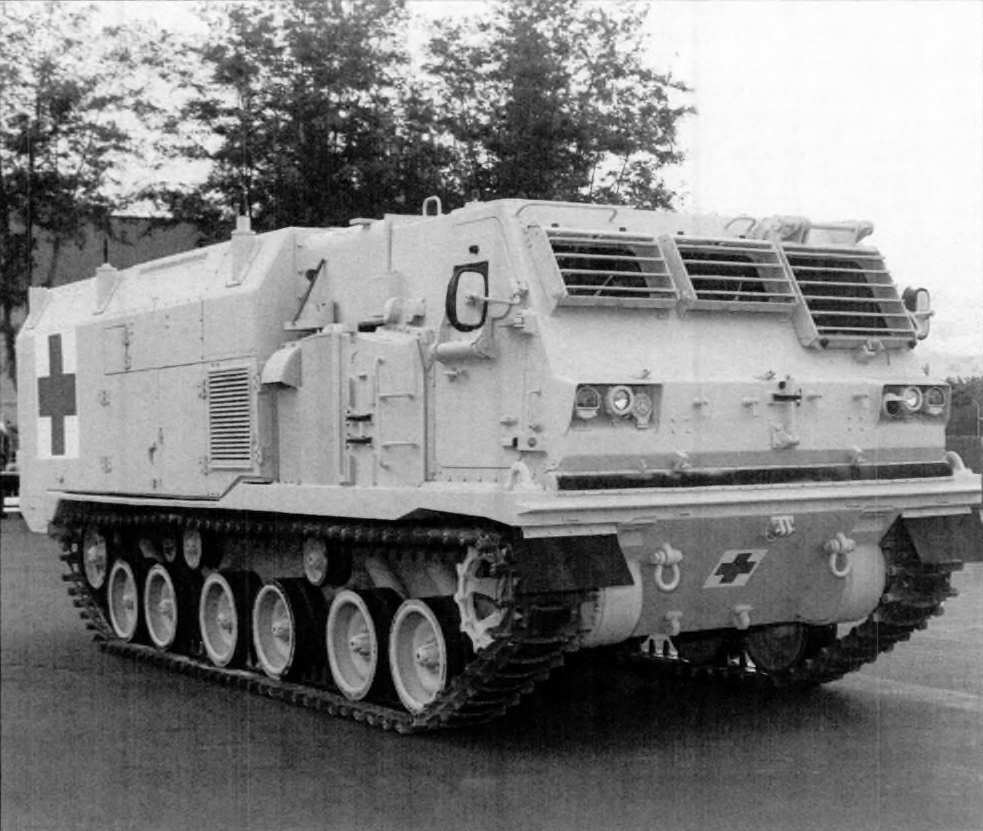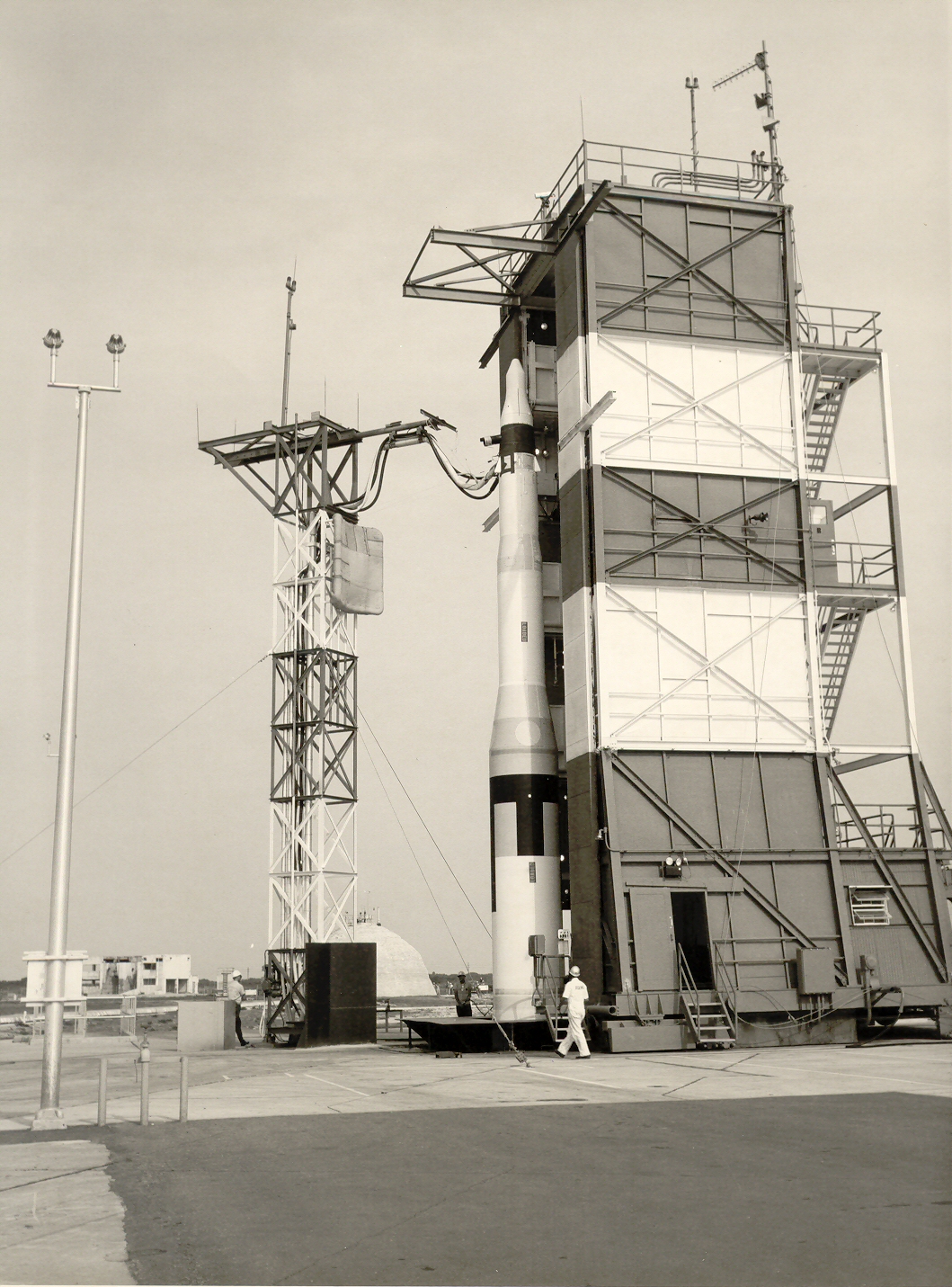|
Honest John Rocket
The MGR-1 Honest John rocket was the first nuclear-capable surface-to-surface rocket in the United States arsenal.The first nuclear-authorized ''guided'' missile was the MGM-5 Corporal. Originally designated Artillery Rocket XM31, the first unit was tested on 29 June 1951, with the first production rounds delivered in January 1953. Its designation was changed to M31 in September 1953. The first Army units received their rockets by year's end and Honest John battalions were deployed in Europe in early 1954. Alternatively, the rocket was capable of carrying an ordinary high-explosive warhead weighing . History and development Developed at Redstone Arsenal, Alabama, the Honest John was a large but simple fin-stabilized, unguided artillery rocket weighing in its initial M31 nuclear-armed version. Mounted on the back of a truck, the rocket was aimed in much the same way as a cannon and then fired up an elevated ramp, igniting four small spin rockets as it cleared the end of the ra ... [...More Info...] [...Related Items...] OR: [Wikipedia] [Google] [Baidu] |
Royal Netherlands Army
The Royal Netherlands Army ( nl, Koninklijke Landmacht) is the land branch of the Netherlands Armed Forces. Though the Royal Netherlands Army was raised on 9 January 1814, its origins date back to 1572, when the was raised – making the Dutch standing army one of the oldest in the world. It fought in the Napoleonic Wars, World War II, the Indonesian War of Independence, and the Korean War and served with NATO on the Cold War frontiers in West-Germany from the 1950s to the 1990s. Since 1990, the army has been sent into the Iraq War (from 2003) and into the War in Afghanistan, as well as deployed in several United Nations' peacekeeping missions (notably with UNIFIL in Lebanon, UNPROFOR in Bosnia-Herzegovina and MINUSMA in Mali). The tasks of the Royal Netherlands Army are laid out in the Constitution of the Netherlands: defend the territory of the Kingdom of the Netherlands (including the Dutch Caribbean) and of its allies, protect and advance the international legal ord ... [...More Info...] [...Related Items...] OR: [Wikipedia] [Google] [Baidu] |
M139 Bomblet
The M139 bomblet was an American sub-munition designed for use in warheads as a chemical cluster munition. Each spherical bomblet held of sarin nerve agent. History A spherical chemical cluster munition, the M134, had been developed for the Honest John rocket but not deployed, owing to a variety of problems. In 1964, a new warhead size was standardized for the smaller, diameter, Little John rocket. The warhead held 52 M139 bomblets. When the MGM-29 Sergeant was deployed in the 1960s, it had the capacity to deliver a warhead carrying 330 M139 bomblets.Smart, Jeffery K. Medical Aspects of Chemical and Biological Warfare'': Chapter 2 - History of Chemical and Biological Warfare: An American Perspective,PDF p. 59), ''Borden Institute'', Textbooks of Military Medicine, PDF via Maxwell-Gunter Air Force Base, accessed November 12, 2008. In total, about 60,000 M139s were produced and stored; almost all were destroyed between April and November 1976. Specifications The M139 was ... [...More Info...] [...Related Items...] OR: [Wikipedia] [Google] [Baidu] |
Imperial War Museum Duxford
Imperial War Museum Duxford is a branch of the Imperial War Museum near Duxford in Cambridgeshire, England. Britain's largest aviation museum, Duxford houses the museum's large exhibits, including nearly 200 aircraft, military vehicles, artillery and minor naval vessels in seven main exhibition buildings.For a list of aircraft, vehicles and boats at Duxford, see The site also provides storage space for the museum's other collections of material such as film, photographs, documents, books and artefacts. The site accommodates several British Army regimental museums, including those of the Parachute Regiment (named '' Airborne Assault'') and the Royal Anglian Regiment. Based on the historic Duxford Aerodrome, the site was originally operated by the Royal Air Force (RAF) during the First World War. During the Second World War Duxford played a prominent role during the Battle of Britain and was later used by United States Army Air Forces fighter units in support of the daylight ... [...More Info...] [...Related Items...] OR: [Wikipedia] [Google] [Baidu] |
Garrison Petawawa
Garrison Petawawa is located in Petawawa, Ontario. It is operated as an army base by the Canadian Army. Garrison facts The Garrison is located in the Ottawa Valley in Renfrew County, northwest of Ottawa along the western bank of the Ottawa River. Its main gate is North of the town of Petawawa. The majority of the base territory is in the municipality of Laurentian Hills, with portions also in Petawawa and Deep River. Approximate personnel numbers are as follows: * Canadian Forces personnel: 5,328 * DND civilian employees: 936 * Canadian Forces dependents: 5,653 Approximately 6,000 people directly connected to the base live in local communities between Deep River and Pembroke. The Garrison has an extensive infrastructure with 465 buildings and over 300 km2 of property comprising the Petawawa Training Area. Fitness facilities Dundonald Hall is the Garrison's main fitness facility and is located on Festubert Boulevard. It houses a 5,000 square metre field house cont ... [...More Info...] [...Related Items...] OR: [Wikipedia] [Google] [Baidu] |
M54 5-ton 6x6 Truck
M54 or M-54 may be: Roads: * M54 motorway, a motorway in England also known as the Telford Motorway * M-54 (Michigan highway), a state highway in Michigan * M54 (Cape Town), a Metropolitan Route in Cape Town, South Africa * M54 (Johannesburg), a Metropolitan Route in Johannesburg, South Africa Vehicles: * BMW M54, a 2000 automobile engine * M54 (truck), a heavy truck used by the United States armed forces Astronomy: * Messier 54, a globular cluster in the constellation Sagittarius {{Letter-NumberCombDisambig ... [...More Info...] [...Related Items...] OR: [Wikipedia] [Google] [Baidu] |
White Sands Missile Range
White Sands Missile Range (WSMR) is a United States Army military testing area and firing range located in the US state of New Mexico. The range was originally established as the White Sands Proving Ground on 9July 1945. White Sands National Park is located within the range. Significant events *The first atomic bomb (code named Trinity) was test detonated at Trinity Site near the northern boundary of the range on 16 July 1945, seven days after the White Sands Proving Ground was established. *After the conclusion of World War II, 100 long-range German V-2 rockets that were captured by U.S. military troops were brought to WSMR. Of these, 67 were test-fired between 1946 and 1951 from the White Sands V-2 Launching Site. (This was followed by the testing of American rockets, which continues to this day, along with testing other technologies.) *NASA's Space Shuttle Columbia landed on the Northrop Strip at WSMR on 30 March 1982 as the conclusion to mission STS-3. This was the only ti ... [...More Info...] [...Related Items...] OR: [Wikipedia] [Google] [Baidu] |
Holger Toftoy
Major General Holger Nelson Toftoy (31 October 1902 – 19 April 1967) was a United States Army career officer instrumental to the development of the United States' early rocketry after World War II, such as the Redstone missile. He persuaded senior officers to bring German scientists to the US after the war, to make use of their expertise, and supervised the relocation of more than 119 scientists. In 1952 he was appointed to direct the Ordnance Missile Laboratories at Redstone Arsenal near Huntsville, Alabama. By 1958 he was deputy commanding general of the Army Ordnance Missile Command, Redstone Arsenal. Later that year he was reassigned as commanding general of Aberdeen Proving Ground, Maryland. Two years later he retired because of health issues, and moved to Florida. Early life and military career Toftoy was born on 31 October 1902, in Marseilles, Illinois. He attended local schools before college. He studied at the University of Wisconsin–Madison as an ROTC cadet be ... [...More Info...] [...Related Items...] OR: [Wikipedia] [Google] [Baidu] |
M-26 Artillery Rocket
The M270 Multiple Launch Rocket System (M270 MLRS) is an American-developed armored, self-propelled, multiple rocket launcher. The U.S. Army variant of the MLRS vehicle is based on the chassis of the Bradley Fighting Vehicle. The first M270s were delivered in 1983. The MLRS were subsequently adopted by several NATO countries and other countries. The MLRS first saw service with the United States in the 1991 Gulf War. The MLRS has been upgraded to fire guided missiles, and has been used by Ukraine in the 2022 Russian invasion of Ukraine. Description Background In the early 1970s, the Soviet Union had a clear advantage over U.S. and NATO forces in terms of rocket artillery. Soviet tactics of bombardment by large numbers of truck-mounted multiple rocket launchers (MRLs), such as the BM-21, would saturate a target area with thousands of rockets, ensuring some would hit specific targets while delivering a psychological impact. By contrast, U.S. artillerists favored cannon artille ... [...More Info...] [...Related Items...] OR: [Wikipedia] [Google] [Baidu] |
MGM-52 Lance
The MGM-52 Lance was a mobile field artillery tactical surface-to-surface missile (tactical ballistic missile) system used to provide both nuclear and conventional fire support to the United States Army. The missile's warhead was developed at Lawrence Livermore National Laboratory. It was replaced by MGM-140 ATACMS, which was initially intended to likewise have a nuclear capability during the Cold War. Deployment The first Lance missiles were deployed in 1972, replacing (together with the US-Navy's nuclear-tipped RIM-2D and RIM-8E/B/D) the earlier Honest John rocket and Sergeant SRBM ballistic missile, greatly reducing the weight and bulk of the system, while improving both accuracy and mobility. A Lance battery (two fire units) consisted of two M752 launchers (one missile each) and two M688 auxiliary vehicles (two missiles each), for a total six missiles; the firing rate per unit was approximately three missiles per hour. The launch vehicles were also able to carry and launc ... [...More Info...] [...Related Items...] OR: [Wikipedia] [Google] [Baidu] |
LGM-30 Minuteman
The LGM-30 Minuteman is an American land-based intercontinental ballistic missile (ICBM) in service with the Air Force Global Strike Command. , the LGM-30G Minuteman III version is the only land-based ICBM in service in the United States and represents the land leg of the U.S. nuclear triad, along with the Trident submarine-launched ballistic missile (SLBM) and nuclear weapons carried by long-range strategic bombers. Development of the Minuteman began in the mid-1950s when basic research indicated that a solid-fuel rocket motor could stand ready to launch for long periods of time, in contrast to liquid-fueled rockets that required fueling before launch and so might be destroyed in a surprise attack. The missile was named for the colonial minutemen of the American Revolutionary War, who could be ready to fight on short notice. The Minuteman entered service in 1962 as a deterrence weapon that could hit Soviet cities with a second strike and countervalue counterattack if the U.S ... [...More Info...] [...Related Items...] OR: [Wikipedia] [Google] [Baidu] |








